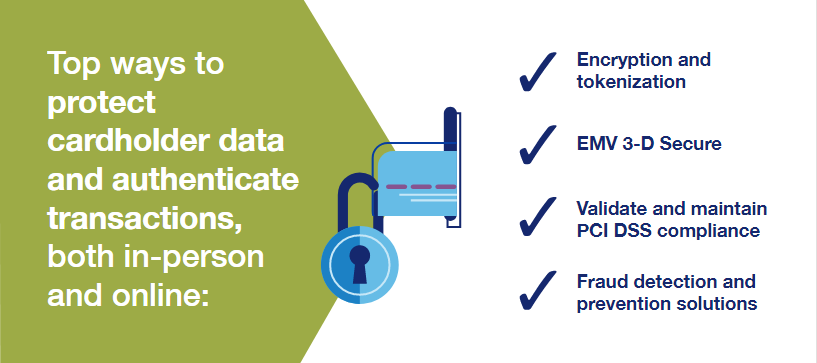
Cybersecurity – Protecting client data through industry best practices

BEC: Recognize a scam

The U.S. e-commerce market is thriving, valued at $1.137 trillion in 2023. Second only to China, the shift towards digital commerce in the United States was accelerated by the pandemic, as well as technological innovations that make these digital transactions seamless and simple.
But the exciting growth of the e-commerce market is threatened by the parallel rise of online fraud. In 2024, experts predict the total cost of e-commerce fraud to merchants will exceed $48 billion globally. Payment fraud began moving online when EMV technology was implemented back in 2015 in the U.S. for in-store purchases. EMV was so successful in decreasing card-present fraud that it pushed payment fraudsters to online transactions.
The COVID-19 pandemic further added to the rise of e-commerce fraud when, at the time, internet traffic surged 60% and more employees began working remotely with fewer security controls in place. With commerce shifting to online environments, digital card-not-present transactions also increased, and many environments were left vulnerable to fraudulent activity.
While fraudsters are developing sophisticated new scams like credential stuffing (mass payment authorization attempts to verify stolen accounts) and streaming potlucks (unauthorized sharing of streaming subscriptions), the most common and concerning type of online fraud is old school. Known as friendly fraud, this is when a cardholder claims a charge is fraudulent when in fact it was a legitimate transaction.
Friendly fraud accounts for approximately 61% of all chargebacks. It’s an expensive type of fraud for merchants, who are expected to pay over $100 billion in chargebacks in 2024. Friendly fraud is quickly becoming a major problem for e-commerce retailers across all industries, as merchants bear more than 75% of the financial impact.
Research shows e-commerce sales in the U.S. rose 90% from 2019 to 2023 and the trend is only expected to continue. Fortunately, businesses can take advantage of the rise in digital sales growth while protecting themselves from all types of transaction fraud, including friendly fraud.
According to a recent IBM study, the average cost of a data breach was $4.45 million in 2023, a 15% increase over 3 years. But organizations with an incident response plan can reduce the cost of a data breach by 61%.
When developing a security strategy for digital transactions, it’s important that any protective tools also help to reduce false declines and unnecessary friction that impede a smooth transaction for online customers. This will support a fast, easy and convenient checkout experience that keeps those customers satisfied.

Thanks to innovations in payment technology, there are many ways businesses can fight fraud and protect cardholder data while offering customers seamless digital payment transactions. One of the best tools available today is EMV 3-D Secure. Improving upon the older 3-D Secure (commonly known as Verified by Visa or MasterCard SecureCode, among others), the updated version offers a smoother user experience and now adapts to a wide variety of devices, including mobile.
EMV 3-D Secure uses 10 times more assessment data points than the previous version, allowing for risk-based authentication by the card issuing bank. After the cardholder submits their information on the merchant payment page, it is sent to the issuing bank, which decides if there is adequate data to determine if the purchase is being made by the true cardholder in order to authenticate and then authorize the cardholder’s transaction.
EMV 3-D Secure also relies on enhanced frictionless security such as biometrics, which is easy for cardholders to use and means customers don’t have to remember complicated passwords. These extra security features decrease the overall risk of fraud and friendly fraud specifically, since merchants who accept the strongly authenticated transactions are less vulnerable to losing potential chargeback disputes.
By providing customers with simple, secure online checkouts, EMV 3-D Secure allows businesses to better protect against fraud, reduce chargeback liability, increase payment authorization rates and ultimately drive e-commerce revenue.
As payments continue to go digital, businesses will need to use innovative technology to protect themselves from transaction fraud. Contact your U.S. Bank relationship manager to learn more and help your organization stay ahead.
Related content


